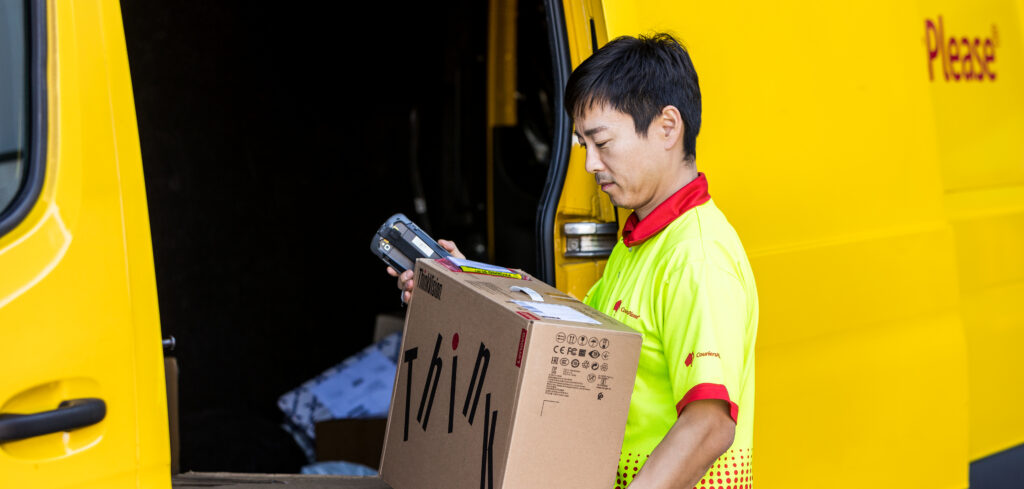The Australian logistics industry is expected to reach US$114.32bn by 2027 and the transportation and logistics workforce is also set to rise by 4.6% in 2026. But despite this promising success and growth, external issues this year, including inflation and supply chain disruptions, have led to the emergence of several challenges that the industry will need to tackle in 2023.
Eight challenges the logistics industry is likely to face next year
Labor shortages. Australia will see a continued tight labor market in 2023, putting a strain on the logistics industry. However, in the second half of 2023, I anticipate that labor shortages will be offset by reduced volumes for some companies, as an economic downturn kicks in. I also predict a growing uptake of automation in the industry and an increase in skilled migrants, which will also help. At CouriersPlease, volumes will increase as the business onboards more SME retail customers, so we will face the challenge of scaling up our delivery capacity quickly to meet this demand.
Natural disasters. This year, flooding across New South Wales (NSW) and Victoria affected supply chains and delivery networks. For example, a recent train derailment caused by heavy rain in regional NSW affected companies that deliver freight on the railway line from Sydney and Brisbane to Perth. I anticipate natural disasters such as these will continue to disrupt the industry in 2023.
Managing new customer expectations, such as same-day delivery. New consumer behaviors and expectations have emerged in the last three years. Most significant is the expectation of faster delivery, particularly the demand for same-day delivery, which is putting additional pressure on the industry. I believe retailers and carriers will try to meet the demand by establishing smaller, satellite warehouses and fulfillment centers in populated metropolitan areas, a move that some retailers in the US have made. Some retail stores will also be transformed into fulfillment centers, also known as ‘dark stores’.
Rising costs of warehousing. Neither building new warehouses nor renting new warehouse space may be economically viable for many retailers as the cost of supply, materials and rental continues to surge – industrial rent has increased an average of 14.9% year-on-year, nationally. Retailers will need to look for more cost-effective solutions, such as automated warehousing – the process of automating the movement of inventory into, within and out of warehouses to customers with minimal human intervention. CouriersPlease has already implemented such technology in its depots, through automated parcel sortation machines.
Cybersecurity risks. Cybersecurity will be a prevalent challenge for many businesses, given the concerning increase in data breaches in 2022. As cargo, passenger, fare and other systems used by Australia’s transportation industry become more complex and digitalized, they are increasingly targeted in high-stakes cyberattacks, including ransomware and phishing. I believe companies will take a more rigorous approach to updating their systems and processes to prevent attacks. For instance, CouriersPlease staged mock cybersecurity exercises this year to test its ability to combat and respond to data breaches. Similarly, the Australian Cyber Security Centre will host a series of exercises from May 2023 to help transportation and logistics companies prepare for potential breaches.
Economic burden due to rising fuel prices. Automotive fuel costs increased in the major Australian state capital cities from AU¢16 and AU¢22 per liter from September 28 to November 16 this year alone, and experts predict costs will continue to increase well into 2023. I expect these rising prices to lead to higher freight costs in 2023, particularly in the transportation of goods that are time sensitive or require refrigeration. While carriers will absorb as much of this cost as possible, consumers may see a slight increase in the price of delivery in 2023.
Demand for sustainable deliveries. Australian consumers increasingly want assurances that retailers and carriers are considering their environmental impact. The industry will need to be more agile when adopting important sustainability goals. I anticipate that the growth of parcel collection-point networks will help meet decarbonization goals. Collection-point networks in other markets, such as Parcelly in the UK, are already innovating by offering ‘dark store’ options to retailers to reduce the distance between customers; in Australia, Hubbed’s recent acquirement of Parcelpoint will also broaden consumer access to these options. I also expect that increased uptake of electric vehicles will help carriers achieve their goals – it is estimated that collection point networks and EVs, combined, can reduce carbon emissions by 87%.
Maintaining online customer loyalty. Many consumers were drawn back into stores in 2022, and through-the-year sales were down 16.9% as of September 2022. The challenge for retailers in 2023 will be to attract customers to shopping sites and retain them. This may be a formidable challenge as more e-commerce stores emerged during the pandemic, leading to increased competition. I anticipate that promotions, discounts, shopping events such as Click Frenzy, and exclusive online stock and deals will increase, as retailers compete for the consumer dollar in a climate of inflation and rising interest rates that is affecting consumer spending.


